Content may contain affiliate links. When you shop the links, I receive a small commission at no cost to you. Thank you for supporting my small business.
Choosing the perfect kitchen backsplash can be a daunting task, but with some careful consideration, you can find a tile that will look great for years to come. The right tile can have a significant impact on the overall design of your kitchen.
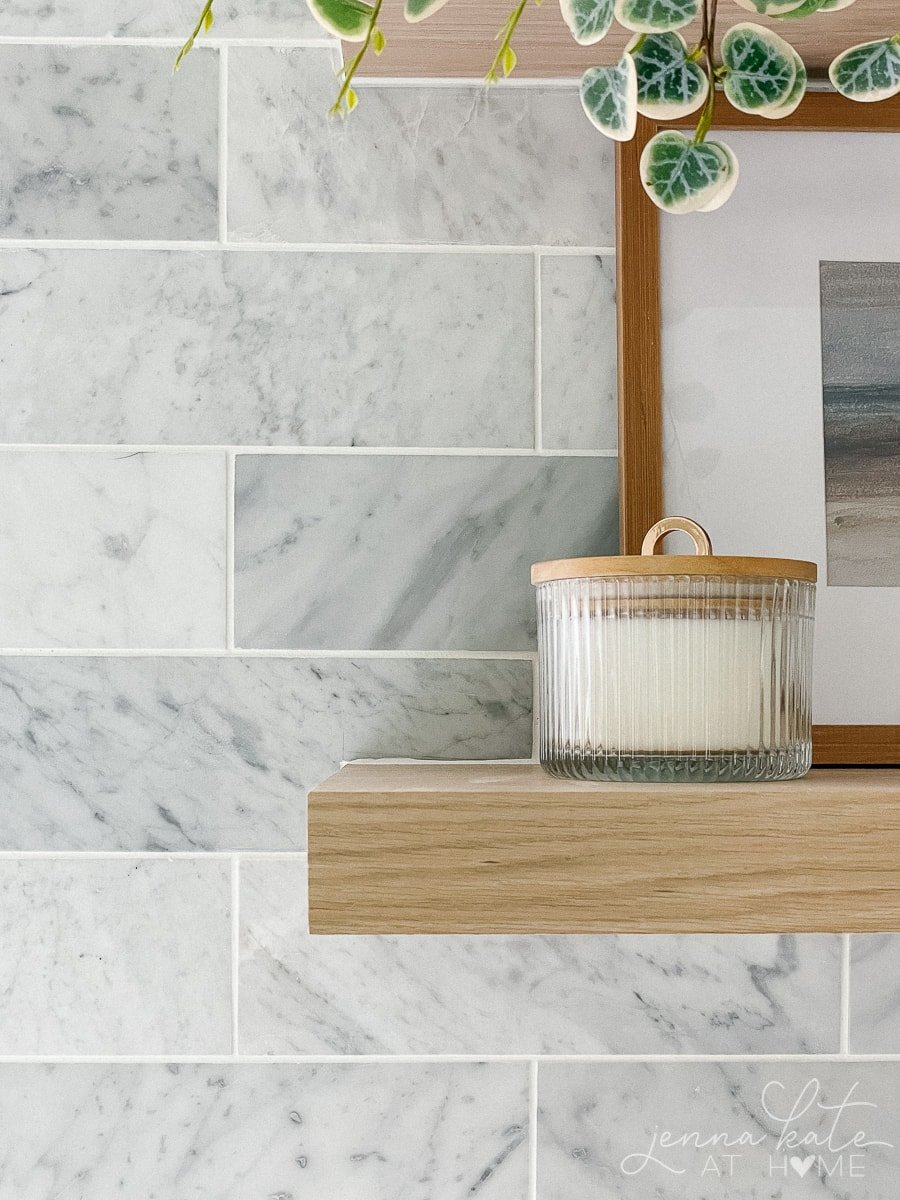
Whether you prefer timeless styles like marble and subway tile, or want something really on trend like the popular hand crafted and glazed Moroccan tiles known as Zellige, there’s something out there for every budget and style.
RELATED: How to clean white quartz countertops
Ready to figure out how to choose to choose a backsplash that’s right for your kitchen? Here’s what you need to know:
Pick a Tile You Can Live With For Years To Come
While tile can be removed and new tile installed down the road, most of us want to choose a tile that we will love 10 years from now. If you’re dead set on something trendy, just know that you may not like it years from now. If you can live with that, then go for it!
I know that we will never plan on remodeling this kitchen again, so it was important to me that I chose a tile that would stand the test of time. While the honed marble I ultimately chose is not a budget-friendly choice (subway tile, on the other hand, is!), it is a classic that I know will stand the test of time.
Determine Your Style
Consider the overall style of your kitchen, including the color of your cabinets, countertops, and flooring. This will help you decide on the style and color of tile that will complement the rest of your kitchen.
Focal Point or Not?
Decide whether you want your backsplash to be a focal point in your kitchen or blend in with the rest of the design.
If you have simple cabinets and countertops, a bold backsplash can add interest to the space. However, if you have a lot of other patterns and textures in your kitchen, you may want to opt for a more subtle or neutral colors for your tile backsplash.
Tile Should Coordinate With Your Countertop Color
Choosing tile that coordinates and compliments your countertops is important for a few reasons. A mismatched backsplash can look tacky and unprofessional, like it’s there only because it was cheap.
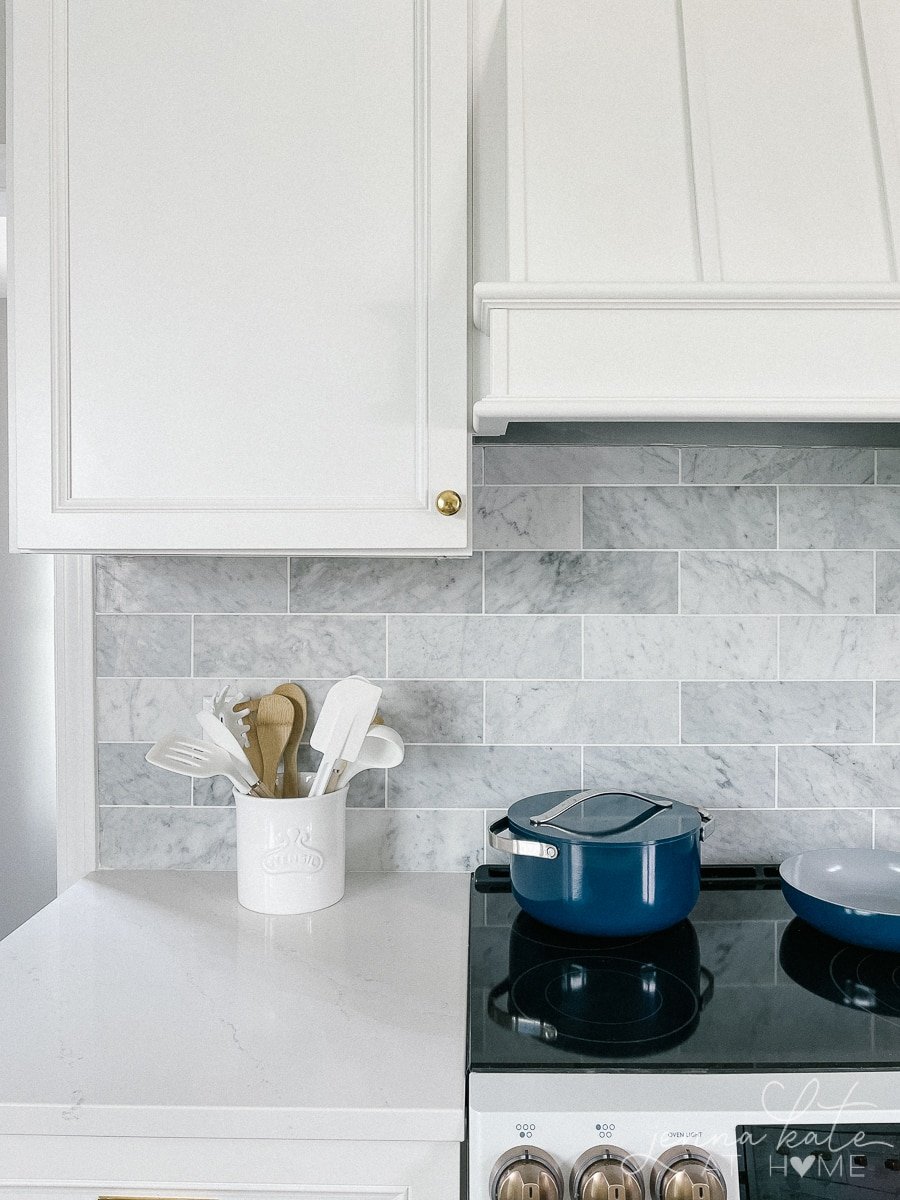
You want to make sure your kitchen looks its best, so buy the most suitable material (tile, glass or marble) according to your tastes and budget.
When shopping around for materials have pictures in hand of different materials you like, then compare them with the current countertop. It will be hard to visualize how something new will work without actually being able to hold it in your hands and see what works together.
Do not buy your countertop and backsplash tile in isolation. I already had my heart set on these Bianco Carrara subway tiles from Floor & Decor, so I brought a sample with me when I was countertop shopping, along with a sample of my cabinets, too.
That way I was able to make sure that the countertop wasn’t too bright white or too creamy against the cooler tones of the tile and slightly warmer white of the cabinets.
If you are working in reverse (you already have a countertop or chose it first), then bring a sample tile shopping with you. If you can’t do this, narrow down your tile choices to 5 or 6, purchase a sample of each and bring it home to sample against your countertop.
Anything you don’t use can easily be returned (yes, even individual pieces!).
Tile Type
There are many types of tile that can be used for a kitchen backsplash, including ceramic tile, natural stone like marble, glass tile, or even opting for a slab of quartz or marble instead of traditional tiles.
Each has its pros and cons, so it’s important to consider your needs and budget. A simple subway tile can run at only 40 cents a piece, whereas more expensive tiles can be $30.00 a square foot.
Ceramic tile
Pros:
- Affordable and available in a wide range of colors and patterns.
- Easy to clean and maintain.
- Resistant to water and heat.
Cons:
- Not as durable as other types of tiles and can crack or chip easily.
- May not be suitable for heavy use kitchens.
- Grout lines can stain over time and require regular cleaning.
Natural stone tile (such as marble, granite, or slate)
Pros:
- Unique and natural appearance with a wide range of colors and patterns.
- Durable and long-lasting with proper care.
- Heat and water-resistant.
Cons:
- Expensive compared to other types of tiles.
- Requires regular sealing and maintenance.
- Some types of stone are porous and can stain easily.
Porcelain Tile
Pros:
- Similar to ceramic tiles, but they are denser and more durable, making them an ideal choice for high-traffic areas like kitchens.
- Water-resistant, which makes them easy to clean and maintain.
- Resistant to stains and scratches
Cons:
- Porcelain tile is a hard material, which can make it difficult to cut and install. This may require a professional installer.
Glass Mosaic Tiles
Pros:
- Mosaic tiles are less popular now than they were 10 years ago.
- Easy to clean and maintain.
- Reflects light and can make the space appear larger.
Cons:
- Expensive compared to other types of tiles.
- Can be difficult to install due to the smaller size of the tiles.
- May not be suitable for heavy use kitchens as it can scratch or chip.
Subway Tile
Pros:
- Classic and timeless look that works well with different kitchen styles.
- Available in a variety of colors and sizes.
- Easy to install and maintain.
- Also all the benefits of ceramic tile
- Still one of the most popular options.
Cons:
- Can appear boring or generic if not paired with the right design elements.
- Grout lines can be difficult to clean and may require regular maintenance.
- Limited in terms of design options compared to other types of tiles.
Stone Slab Backsplash (natural stone or quartz):
Pros:
- Provides a seamless and luxurious look to the kitchen.
- Popular choice in modern kitchens.
- Durable and long-lasting with proper care.
- Resistant to water and heat.
Cons:
- Expensive compared to other types of tiles.
- Requires professional installation.
- Can be heavy and may require additional support.
Budget
It’s worth mentioning again but budget is a very practical consideration for most people. Backsplash tiles come in a wide range of prices, so it’s important to consider your budget when making a selection. Some backsplash materials, such as natural stone, can be quite expensive. Don’t be afraid to shop around!
Consider Maintenance
Finally, consider the maintenance required for the type of tile you choose. Some materials like natural stone require regular sealing, while others like ceramic are easier to maintain.
Don’t Forget to Consider Your Flooring
While the flooring isn’t nearly as important to match, since our new mudroom floor would be visible from the kitchen, I wanted it to flow and not look disjointed.
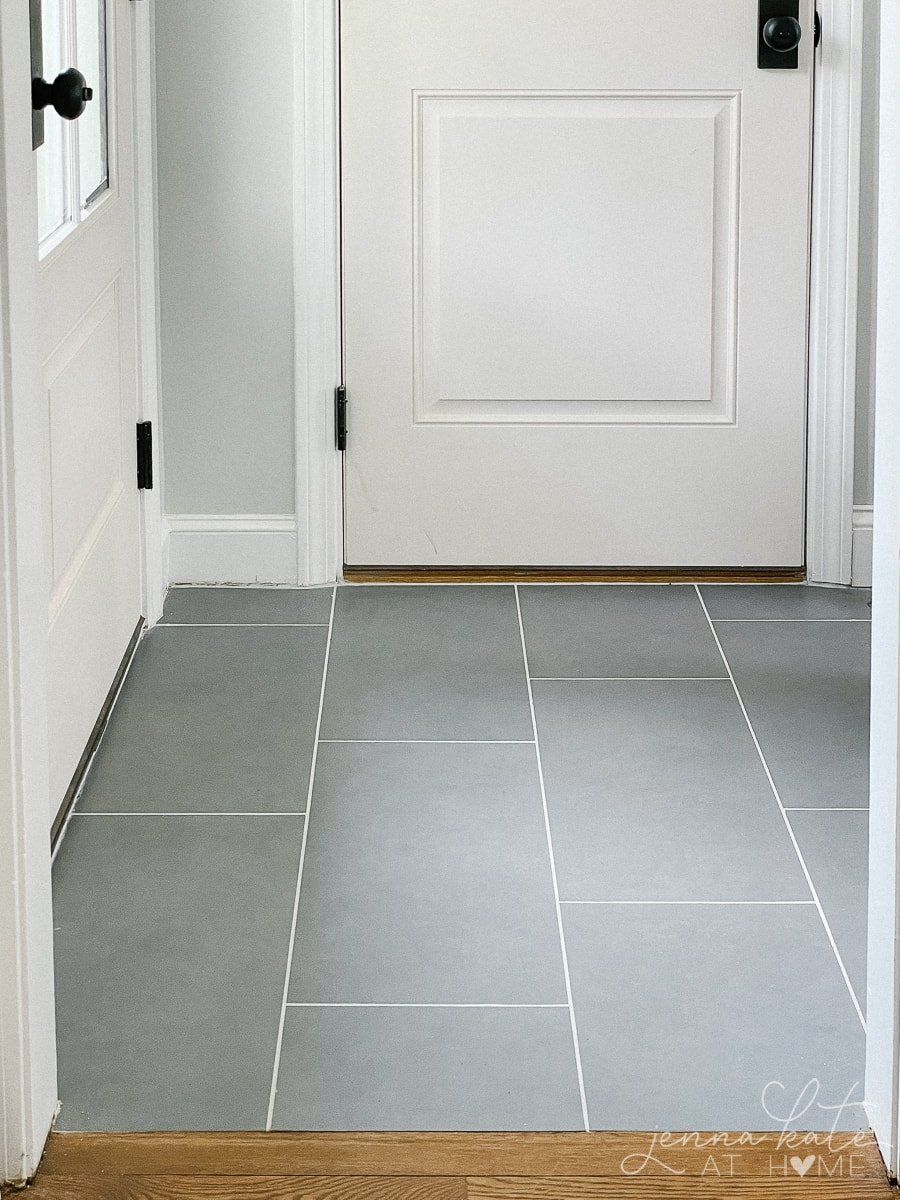
For this reason I chose a simple large format gray tile with gray grout (the color “cobblestone” from Mapei). I It meshes well with the gray in the kitchen backsplash and is easily cleaned, since the mudroom is a high traffic area.
How To Calculate The Amount of Tile Needed
To calculate how much tile is needed for your kitchen backsplash, measure the width and height of the area where you want to install the tile. Multiply the width by the height to get the square footage, then add 10% to account for cuts and waste.
If you’re running the tile to the ceiling, don’t forget to account for the extra square footage.
The great thing about purchasing extra tile is that you’ll have it on hand so that you don’t need to run to the store for extra, AND almost all stores will take back any extra tile by the piece! So even if you only have a half a box left, you can return it!
Why I Chose Honed Marble Tile
Subway tile and Zellige tile seem are currently a popular choice of both homeowners and interior designgers for a tile backsplash. I think they are both beautiful. White subway tiles are inexpensive and always look good, and the natural variation and glazed finish of the Zellige tile adds more texture and interest than a basic subway.
However, I’m already sick of seeing these types of tiles on Instagram so I was worried that I was quickly tire of them in my own home, too.
Marble is considerably more expensive than subway tile (or many other tiles for that matter). But marble has been around for centuries and still looks beautiful to me. It has so much variation in each piece of tile and it works with the overall cooler color scheme I have in my home.
It’s also very durable, especially when sealed properly.
I shopped around a lot for larger marble subway tiles, and was happy to find the best price and selection at Floor & Decor. Whatever tile you have your heart set on, I bet you will find it there! It’s such an amazing store.
The Boxes of Tile Need to Be Mixed Prior to Installation
My only major caveat with marble is that because it’s a natural stone, there will be a lot of variation. The “white” carrara that I purchased has been sorted so that it’s generally on the lighter scale of grays. However, there’s definitely still some darker grays, some beiges and even tile with naturally occurring patterns that would have bothered me.
For the most natural look, the boxes of marble need to be mixed prior to being installed. This is really important to avoid sections that are darker and lighter – because the tile tends to be boxed similarly (you’ll find one box of all lighter, almost white tile and then another that’s all dark tile).
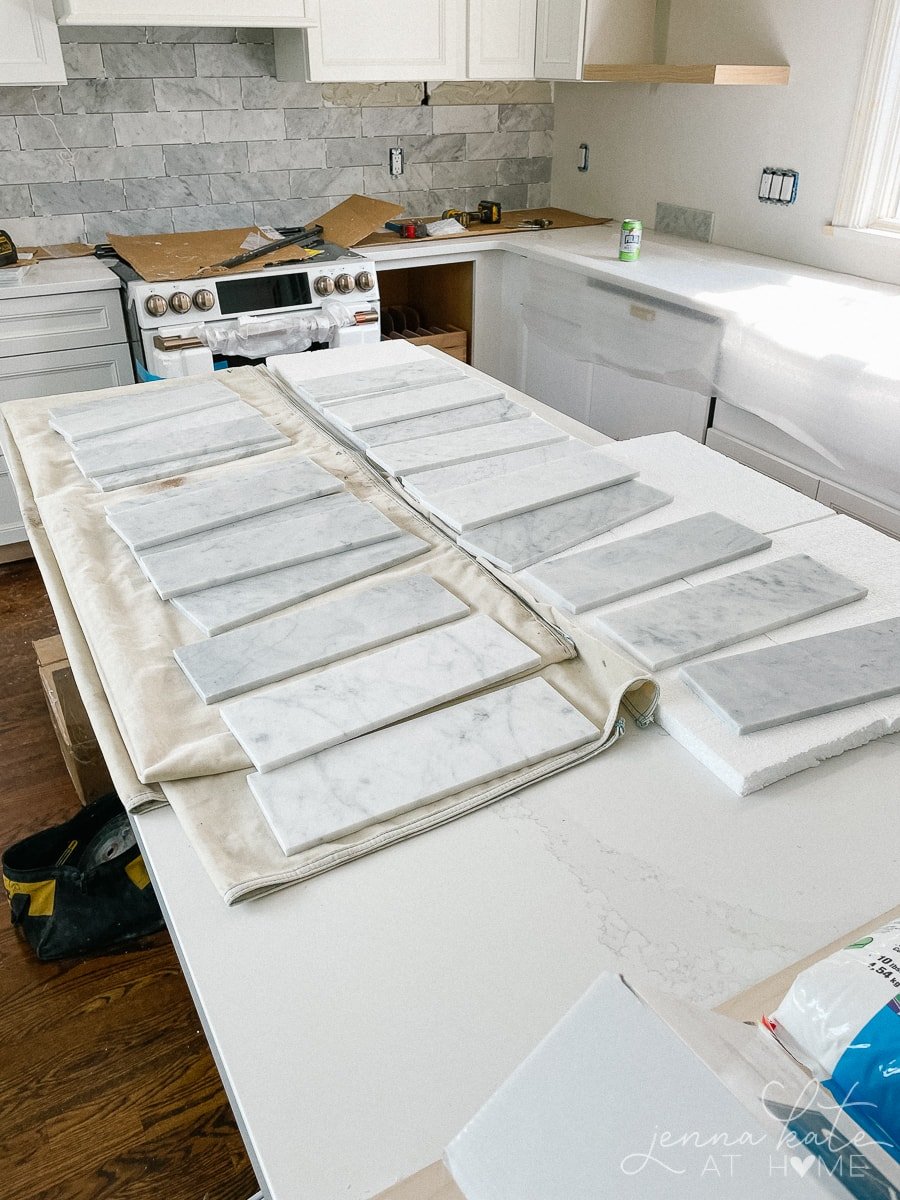
I was a bit extra, and went a step further, and hand-picked every single piece of tile that went up on the wall. I know from past experience that there’s nothing more annoying that one piece of marble that has a pattern like a face, or a wave or something weird, that will stick out like a sore thumb and bother me for eternity.
I also pulled out all the darker tiles that I didn’t like, as well as any that had a beige or slightly yellow/green cast to them.
How to Decide on a Grout Color
While choosing a grout color is partially dictated by the tile itself, it is also personal choice.
When I was ready to have my new honed marble backsplash installed, everyone told me to choose gray grout for easy cleaning and so that the marble would blend together, creating a more seamless feel.
However, I didn’t want a seamless feel and I love the look of white grout with Carrara marble. Yes, it creates more of a “picture frame” look (similar to white subway tile with darker grout) but I like that, and I like how the white grout stops the marble from ever looking too dark.
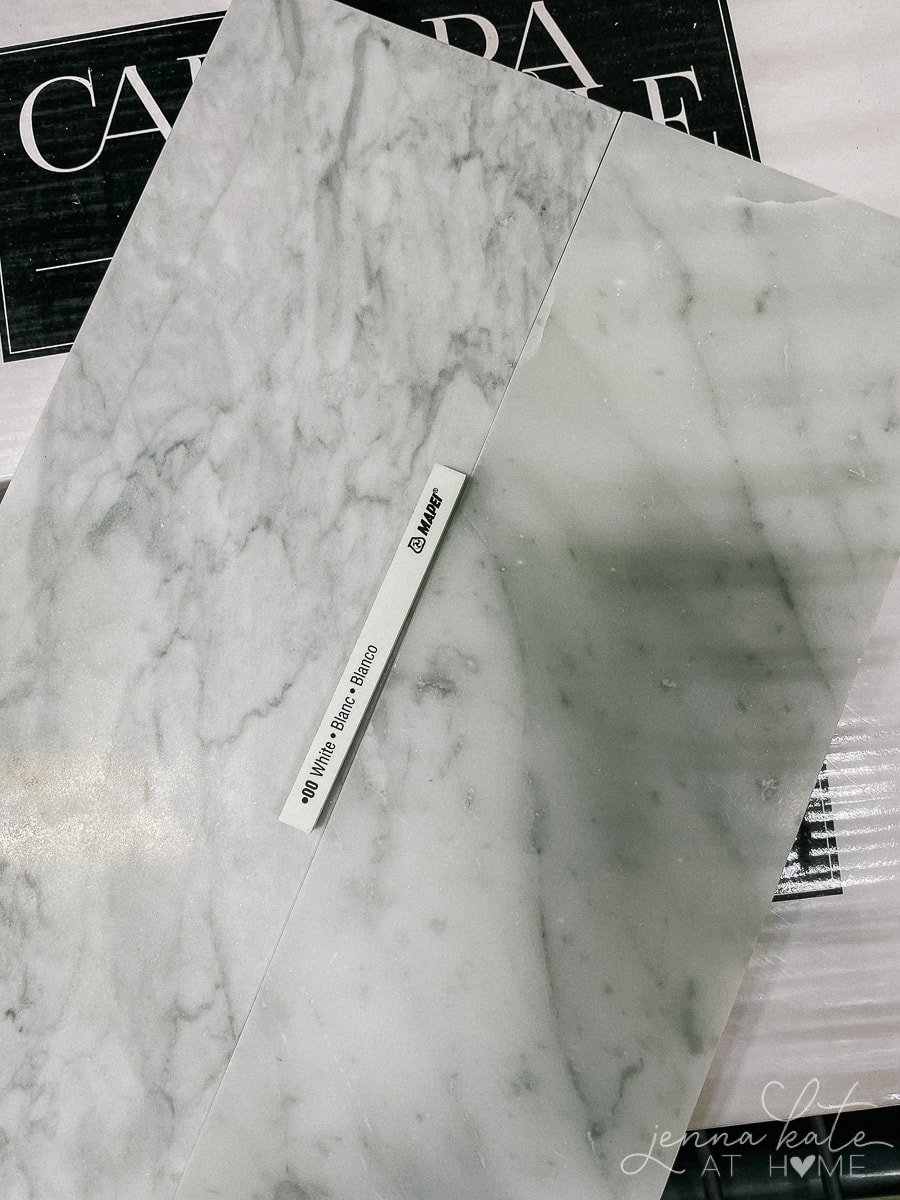
I didn’t go into this blindly knowing what colors of grout to use, though. I made sure to do my homework and I worked with a store assistant at my local Floor & Decor store who helped me match my tile to a few suitable grout colors. Then we narrowed it down from there.
The best tip she gave me was to look at the colors in the tile itself. Those will dictate what grout colors will work best. In the case of my marble, I had white, light gray and darker gray. Any of those three colors made for the perfect grout compliment.
If you’re dealing with a plain white tile (like subway), you can choose whatever grout color you want. Just keep in mind, the darker the grout the less forgiving it is. Medium to dark gray grout will show every single minor imperfection and amplify it.
For those of you who need a bit more help beyond just choosing grout colors, Floor & Decor offer free design services. Their designers can help you pick product and materials to help you finish the project. When renovating, every bit of free help is welcome, right?!
What’s The Best Grout Line Size for a Backsplash?
Your grout line size depends on the look you are trying to achieve and where it will be.
Smaller grout lines help tile blend more seamlessly and require less cleaning. My tile guy recommended 1/16 inch as what most people want for their backsplash, but after comparing it side by side with the 1/8 size, I opted for the slightly larger grout size. But that was totally a personal preference thing!
Larger grout lines on backsplashes are generally considered outdated, and should be reserved for flooring. For my pantry floor, I also chose the 1/8 size but up to 1/4 inch would have been fine. I wanted to keep the grout line relatively small, to avoid worrying out cleaning too much grout in the future!
How to Seal Marble Tiles
Marble has been around forever because it’s easy to clean, very durable and beautiful. However, marble is porous (especially the honed type that I chose) so it needs to be sealed to avoid stains.
Sealing is actually very easy to do and can be re-done every six to 12 months to keep your marble backsplash looking its very best. To seal your marble backsplash make sure to use an impregnating sealer that’s compatible with marble.

Frequently Asked Questions
Final Thoughts
I hope hearing about my process for selecting tile for my kitchen remodel was helpful for you! It was one of my favorite aspects of designing my new kitchen and I’m so thrilled with how it turned out.
At the end of the day, the best tile for a kitchen backsplash is one that works with the overall style of the kitchen and that meets your level of comfort in terms of cleaning ability and durability.
If you’re starting the process and trying to figure out how to choose a backsplash, visualizing everything together is key, so don’t be afraid to bring samples while choosing a kitchen color countertop, cabinets, and even paint colors.


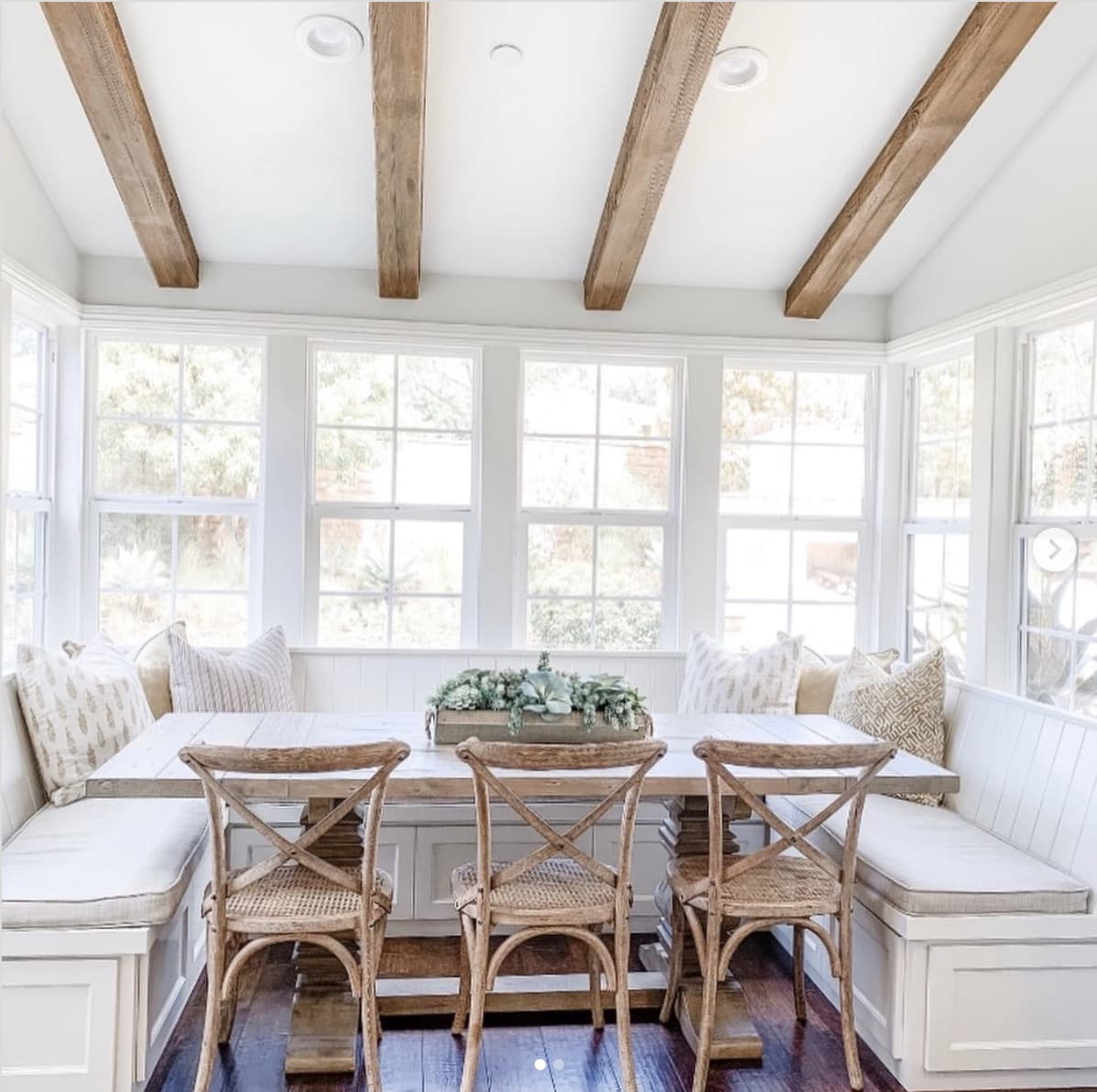
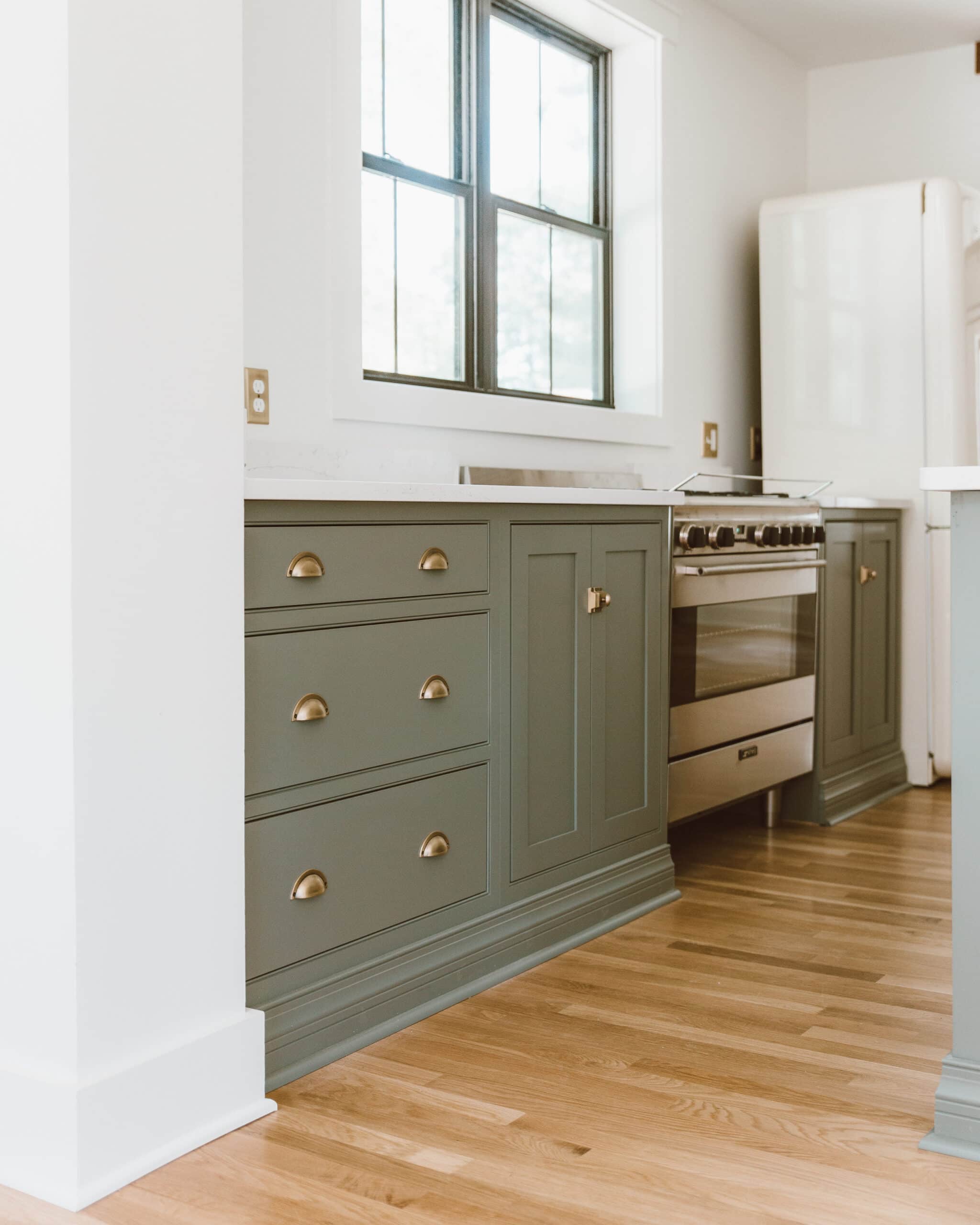
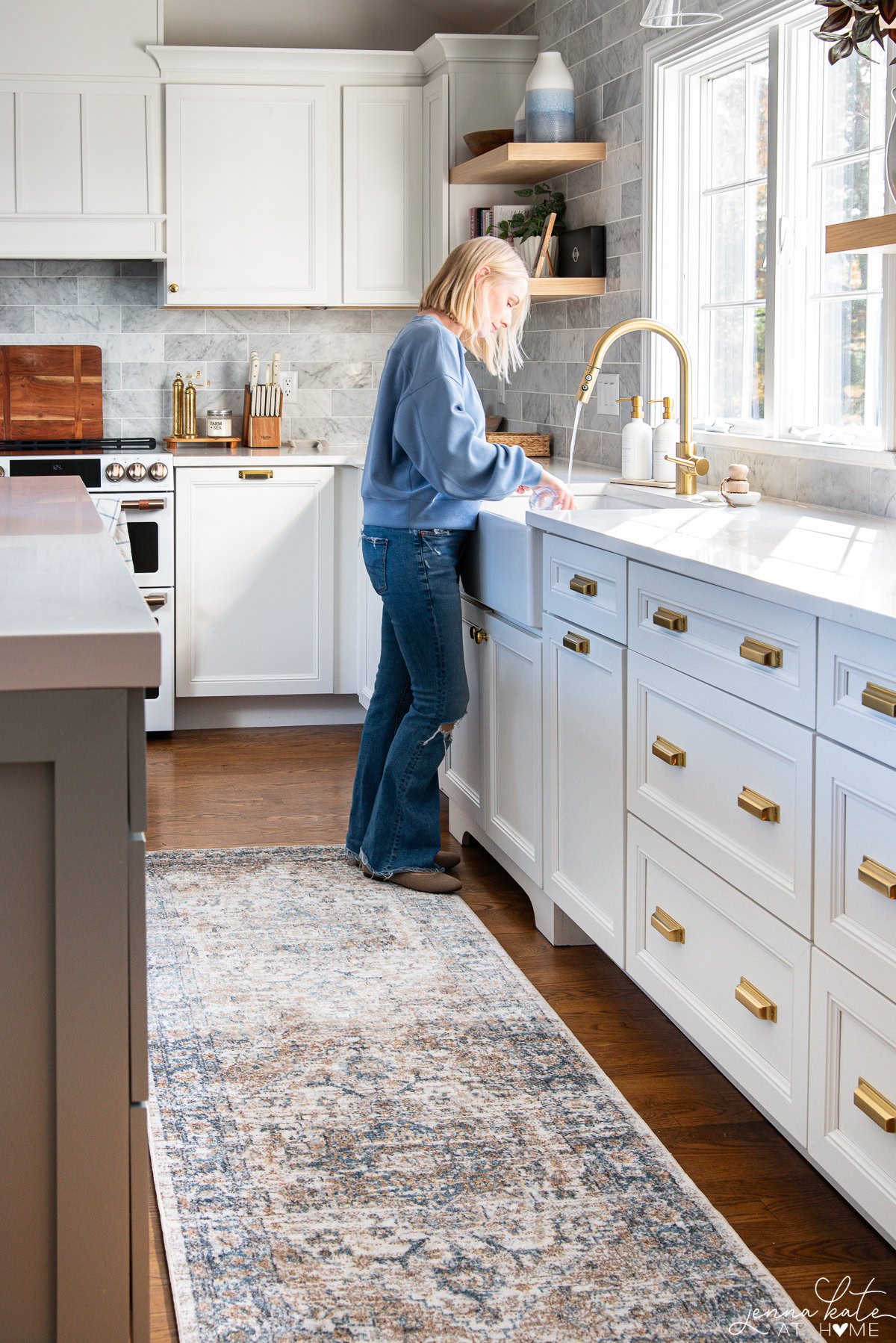
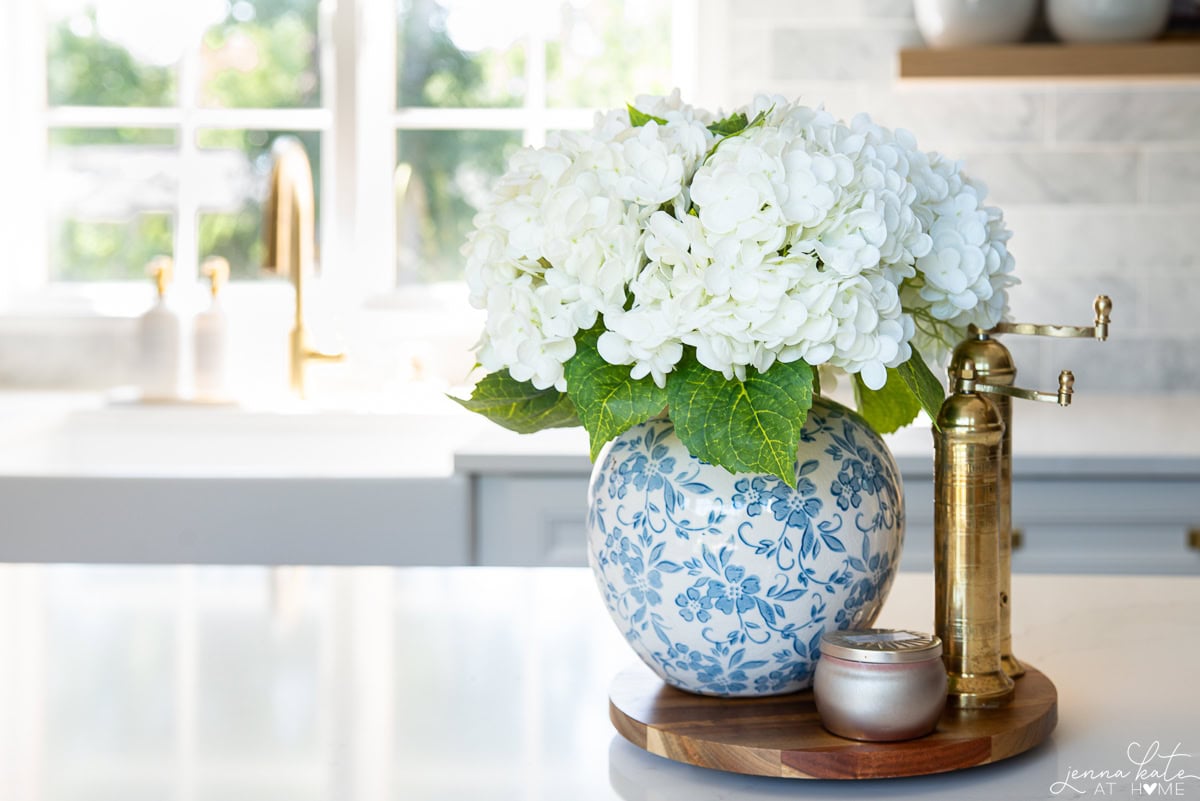
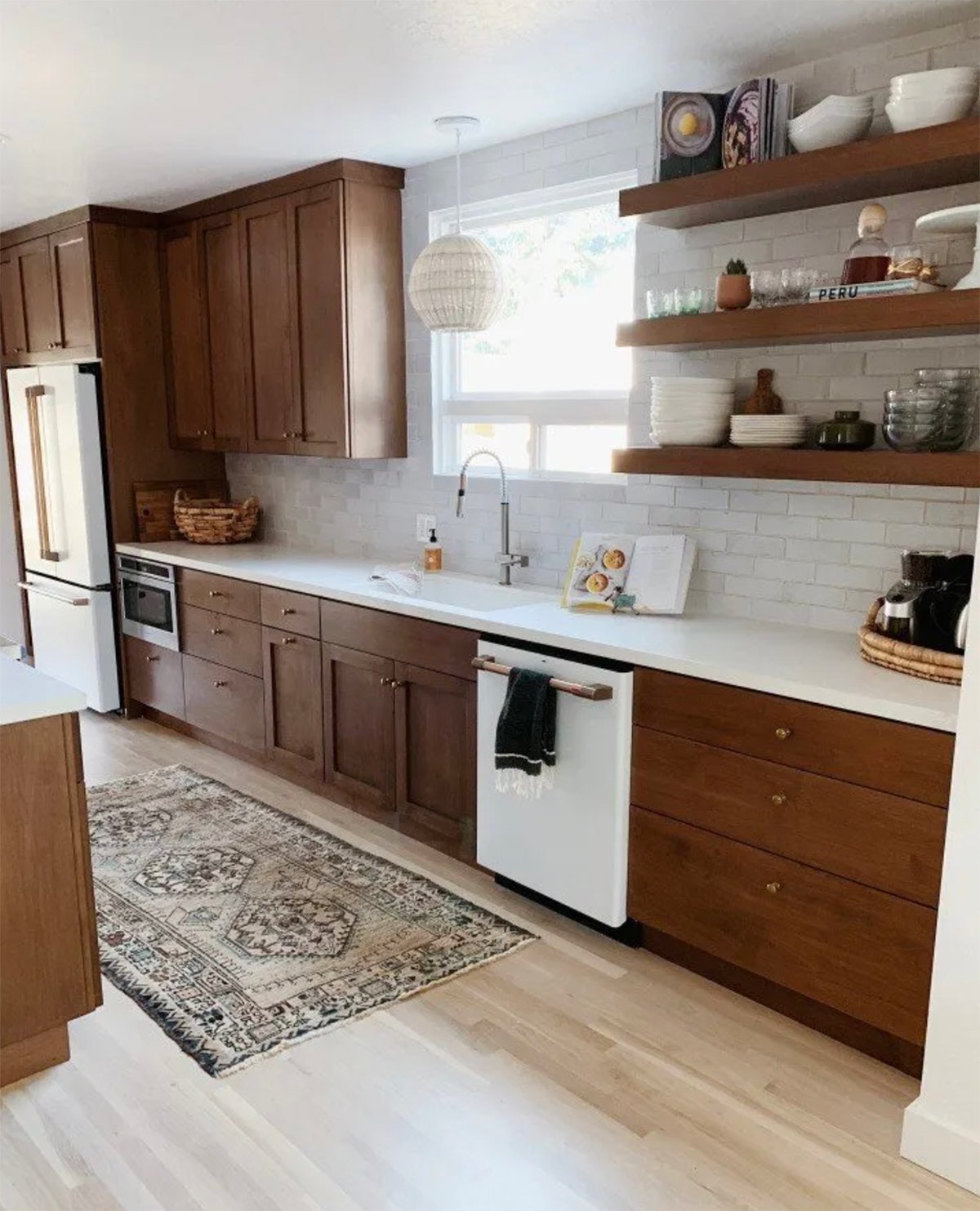
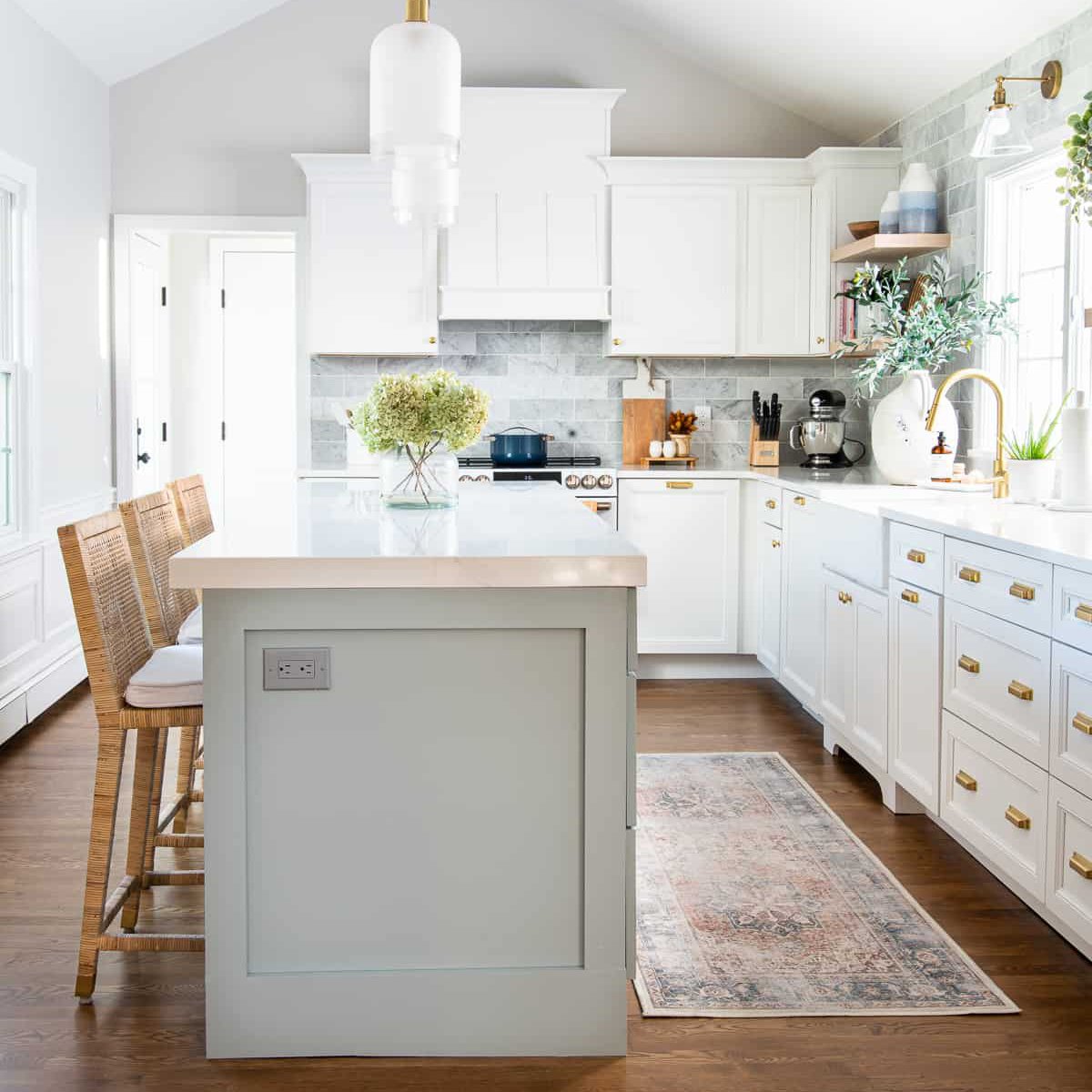
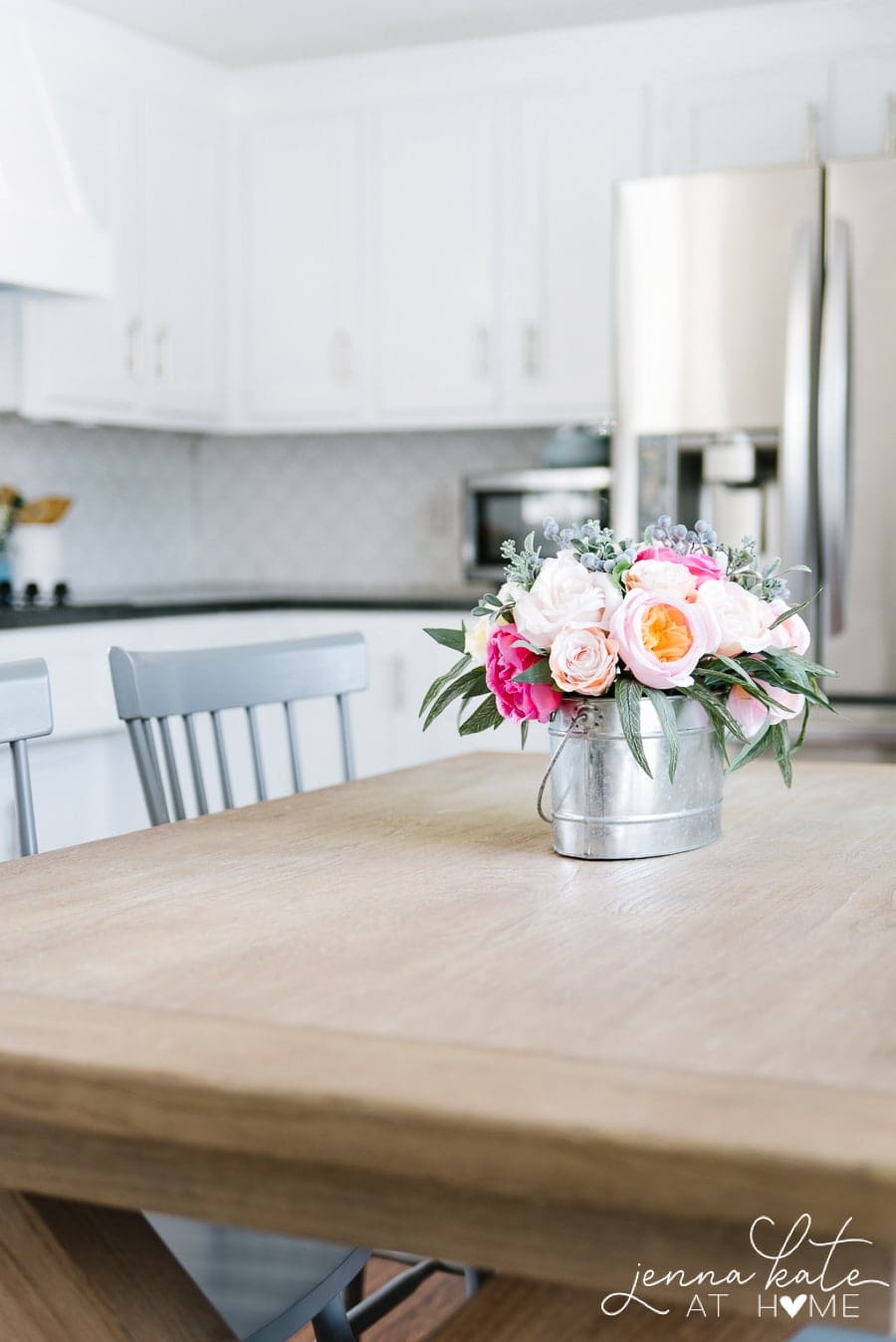
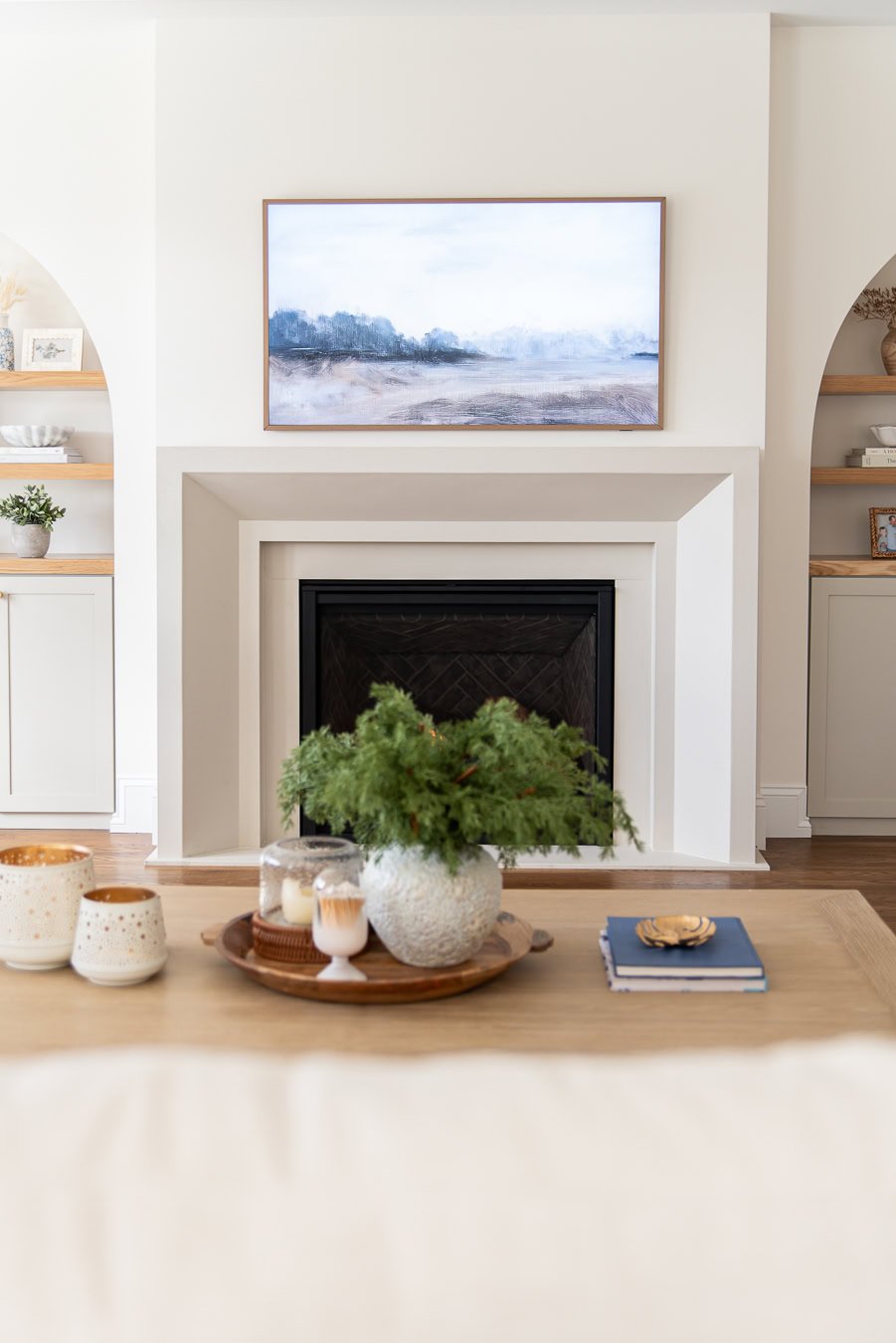

Wow, that was fabulous! So much information and so much detail. Exactly what I needed to start my search for the perfect backsplash. We are building our dream home in Costa Rica and do not have access to Floor and Decor, but I will be checking out their website to see what’s possible. Thanks so much for this concise and comprehensive article. SO glad I signed up for your emails!!
Thank you so much! I’m glad it was helpful!